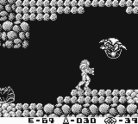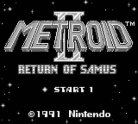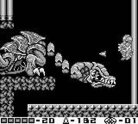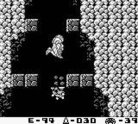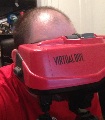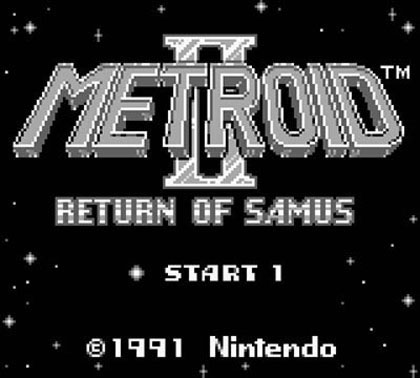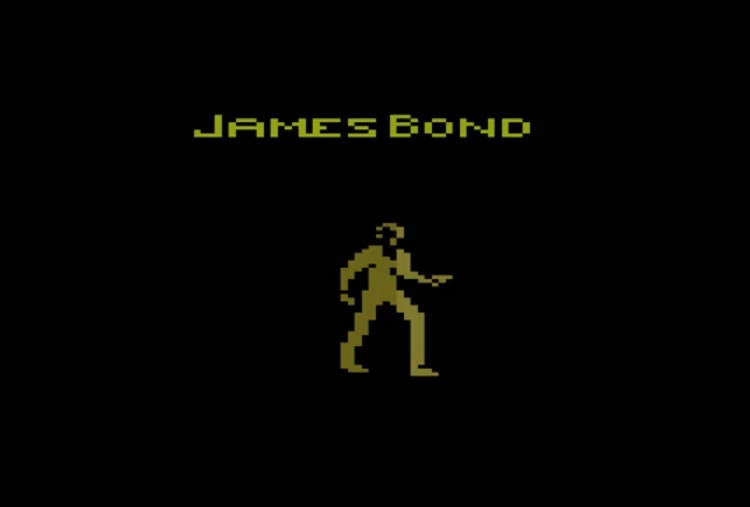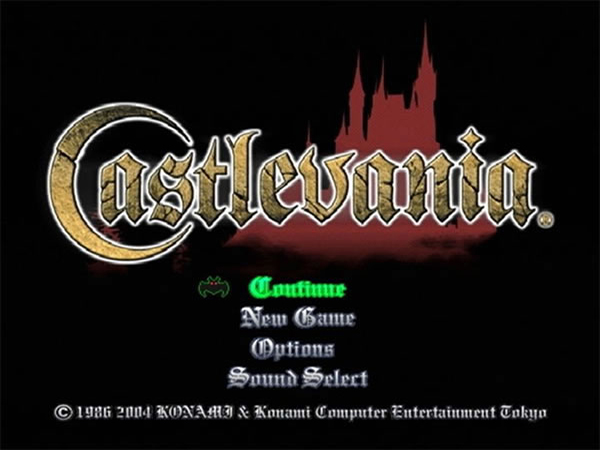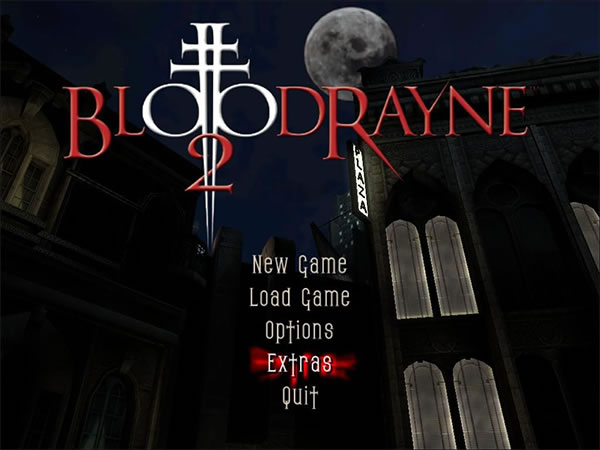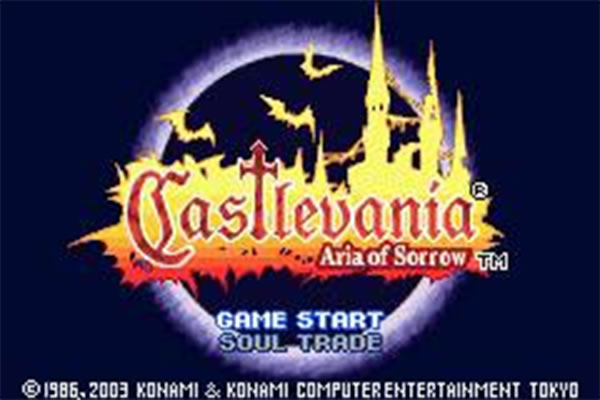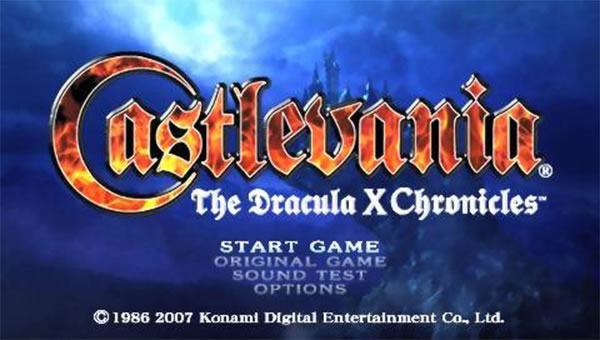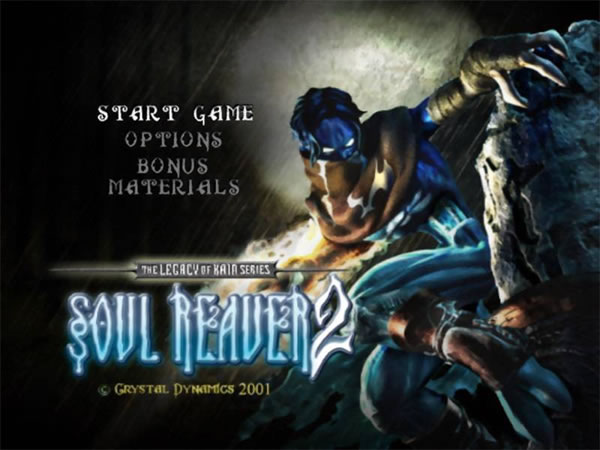- CLASSIC MAGAZINES
- REVIEW CREW
A show recapping what critics thought back
when classic games first came out! - NEXT GENERATION'S BEST & WORST
From the worst 1-star reviews to the best
5-stars can offer, this is Next Generation! - NINTENDO POWER (ARCHIVE)
Experience a variety of shows looking at the
often baffling history of Nintendo Power! - MAGAZINE RETROSPECTIVE
We're looking at the absolutely true history of
some of the most iconic game magazines ever! - SUPER PLAY'S TOP 600
The longest and most ambitious Super NES
countdown on the internet! - THEY SAID WHAT?
Debunking predictions and gossip found
in classic video game magazines! - NEXT GENERATION UNCOVERED
Cyril is back in this spin-off series, featuring the
cover critic review the art of Next Generation! - HARDCORE GAMER MAGAZING (PDF ISSUES)
Download all 36 issues of Hardcore Gamer
Magazine and relive the fun in PDF form!
- REVIEW CREW
- ELECTRONIC GAMING MONTHLY
- ELECTRONIC GAMING MONTHLY RANKS
From Mario to Sonic to Street Fighter, EGM
ranks classic game franchises and consoles! - ELECTRONIC GAMING MONTHLY BEST & WORST
Counting down EGM’s best and worst reviews
going year by year, from 1989 – 2009! - ELECTRONIC GAMING BEST & WORST AWARDS
11-part video series chronicling the ups and
downs of EGM’s Best & Worst Awards!
- ELECTRONIC GAMING MONTHLY RANKS
- GAME HISTORY
- GAME OVER: STORY BREAKDOWNS
Long-running series breaking down game
stories and analyzing their endings! - A BRIEF HISTORY OF GAMING w/ [NAME HERE]
Real history presented in a fun and pithy
format from a variety of game historians! - THE BLACK SHEEP
A series looking back at the black sheep
entries in popular game franchises! - INSTANT EXPERT
Everything you could possibly want to know
about a wide variety of gaming topics! - FREEZE FRAME
When something familiar happens in the games
industry, we're there to take a picture! - I'VE GOT YOUR NUMBER
Learn real video game history through a series
of number-themed episodes, starting at zero! - GREAT MOMENTS IN BAD ACTING
A joyous celebration of some of gaming's
absolute worst voice acting!
- GAME OVER: STORY BREAKDOWNS
- POPULAR SHOWS
- DG NEWS w/ LORNE RISELEY
Newsman Lorne Riseley hosts a regular
series looking at the hottest gaming news! - REVIEW REWIND
Cyril replays a game he reviewed 10+ years
ago to see if he got it right or wrong! - ON-RUNNING FEUDS
Defunct Games' longest-running show, with
editorials, observations and other fun oddities! - DEFUNCT GAMES QUIZ (ARCHIVE)
From online quizzes to game shows, we're
putting your video game knowledge to the test!- QUIZ: ONLINE PASS
Take a weekly quiz to see how well you know
the news and current gaming events! - QUIZ: KNOW THE GAME
One-on-one quiz show where contestants
find out if they actually know classic games! - QUIZ: THE LEADERBOARD
Can you guess the game based on the classic
review? Find out with The Leaderboard!
- QUIZ: ONLINE PASS
- DEFUNCT GAMES VS.
Cyril and the Defunct Games staff isn't afraid
to choose their favorite games and more! - CYRIL READS WORLDS OF POWER
Defunct Games recreates classic game
novelizations through the audio book format!
- DG NEWS w/ LORNE RISELEY
- COMEDY
- GAME EXPECTANCY
How long will your favorite hero live? We crunch
the numbers in this series about dying! - VIDEO GAME ADVICE
Famous game characters answer real personal
advice questions with a humorous slant! - FAKE GAMES: GUERILLA SCRAPBOOK
A long-running series about fake games and
the people who love them (covers included)! - WORST GAME EVER
A contest that attempts to create the worst
video game ever made, complete with covers! - LEVEL 1 STORIES
Literature based on the first stages of some
of your favorite classic video games! - THE COVER CRITIC
One of Defunct Games' earliest shows, Cover
Critic digs up some of the worst box art ever! - COMMERCIAL BREAK
Take a trip through some of the best and
worst video game advertisements of all time! - COMIC BOOK MODS
You've never seen comics like this before.
A curious mix of rewritten video game comics!
- GAME EXPECTANCY
- SERIES ARCHIVE
- NINTENDO SWITCH ONLINE ARCHIVE
A regularly-updated list of every Nintendo
Switch Online release, plus links to review! - PLAYSTATION PLUS CLASSIC ARCHIVE
A comprehensive list of every PlayStation
Plus classic release, including links! - RETRO-BIT PUBLISHING ARCHIVE
A regularly-updated list of every Retro-Bit
game released! - REVIEW MARATHONS w/ ADAM WALLACE
Join critic Adam Wallace as he takes us on a
classic review marathon with different themes!- DEFUNCT GAMES GOLF CLUB
Adam Wallace takes to the links to slice his way
through 72 classic golf game reviews! - 007 IN PIXELS
Adam Wallace takes on the world's greatest spy
as he reviews 15 weeks of James Bond games! - A SALUTE TO VAMPIRES
Adam Wallace is sinking his teeth into a series
covering Castlevania, BloodRayne and more! - CAPCOM'S CURSE
Adam Wallace is celebrating 13 days of Halloween
with a line-up of Capcom's scariest games! - THE FALL OF SUPERMAN
Adam Wallace is a man of steel for playing
some of the absolute worst Superman games! - THE 31 GAMES OF HALLOWEEN
Adam Wallace spends every day of October afraid
as he reviews some of the scariest games ever! - 12 WEEKS OF STAR TREK
Adam Wallace boldly goes where no critic has
gone before in this Star Trek marathon!
- DEFUNCT GAMES GOLF CLUB
- DAYS OF CHRISTMAS (ARCHIVE)
Annual holiday series with themed-episodes
that date all the way back to 2001!- 2015: 30 Ridiculous Retro Rumors
- 2014: 29 Magazines of Christmas
- 2013: 29 Questionable Power-Ups of Christmas
- 2012: 34 Theme Songs of Christmas
- 2011: 32 Game Endings of Christmas
- 2010: 31 Bonus Levels of Christmas
- 2009: 30 Genres of Christmas
- 2008: 29 Controls of Christmas
- 2007: 34 Cliches of Christmas
- 2006: 33 Consoles of Christmas
- 2005: 32 Articles of Christmas
- 2004: 31 Websites of Christmas
- 2003: 29 Issues of Christmas
- 2002: 28 Years of Christmas
- 2001: 33 Days of Christmas
- NINTENDO SWITCH ONLINE ARCHIVE
- REVIEW ARCHIVE
- FULL ARCHIVE
Metroid II: Return of Samus
Let me start off by saying how much I absolutely love the Metroid series. The first time I ever played Metroid on the Nintendo Entertainment System was at my cousin's house. We would spend all day just trying to map out the levels and make our way through the game. Where there are good times, there will be good memories. To this day, the series is still one of my favorites, and I always look forward to any news I can find on what's next for Metroid. However, until recently, I had never even played nor owned a copy of Metroid II: Return of Samus.
Once again, Metroid puts you in the shoes of Samus Aran, a female bounty hunter who was raised by a group of aliens called the Chozo. As Samus, you are sent to the planet SR-388 to hopefully rid the universe of a dangerous organism called "metroid." Her armor is a special suit that gives the ability to fire all kinds of weapons, including bombs, missles and her standard blaster. It also allows Samus to compact her body enough to literally roll into a ball and squeeze through spaces she wouldn't normally be able to enter.

Gameplay in this particular game is a bit different than the first, mainly due to how progression is achieved. In the original Metroid, there were certain power-ups you had to find in order to progress, whereas this sequel involves finding and defeating different kinds of metroids. There are four types of metroids (Alpha, Beta, Zeta and Omega), so each encounter can be pretty different. Samus will discover that the enemies become progressively harder to kill, requiring more missiles each time.
Because it takes so many missiles to kill each Metroid (as well as the final boss), Metroid II allows players to explore the terrain and upgrade both their energy and weapon capacity. To aid in finding these add-ons, there are multiple suit and weapon upgrades you must find. The ice beam and wave beam make a return, with the plasma and spazer beams entering the series for the first time. The spazer separates into three beams to cover a wide area. On the other hand, the Plasma beam is more powerful, but is basically just a laser with a short coverage area. Samus can only use one of these weapons at a time, but can return to a pick up point to grab them again.
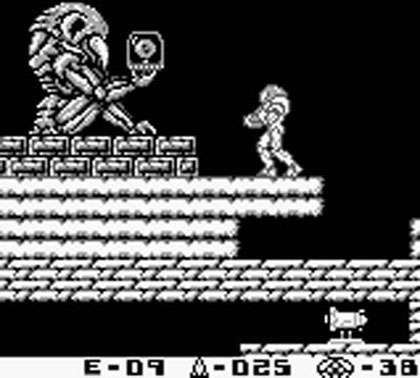
Both the spider ball and the spring ball also make their first appearance in this sequel. The spider ball gives Samus the ability to climb walls, while the spring ball gives her the ability to jump; both while in ball form. Game controls feel tight and are simple enough to learn within the first few minutes of having any new power-up. Samus is able to crouch as well, which adds a new dynamic to fighting enemies lower to the ground. Because this is a mobile title, there are also save points spread around the world to make sure no progress is lost.
Going back and playing this game, I realize how far the series (and gaming in general) has come since its release in 1991. Being the first time playing it, I also can appreciate how well it holds up today. Things that have become series staples were first introduced in this Game Boy sequel. The look of Samus' suit first started off here, as well as some of the exploration elements.

One of the few drawbacks to Metroid II is how dark this game can be. Nintendo did a great job of contrasting the ground to the black background, but there are times when playing on a Game Boy can be a bit irritating if you don't have the right lighting. Another complaint is the lack of a map. Gamers have been spoiled since the days of Metroid II; we've had maps and general hints that make navigation painless. Is this game unplayable without a map? Absolutely not. Even the Metroid games with maps have secret areas not shown. The gameplay alone makes up for some of the imperfections.
If you're having a hard time dealing with the fact that no new Metroid game has been announced in years, go back and give Metroid II: Return of Samus another look. It's readily available online at many retailers, and even on the Nintendo 3DS Virtual Console. My only recommendation would be to have a map handy.
Once again, Metroid puts you in the shoes of Samus Aran, a female bounty hunter who was raised by a group of aliens called the Chozo. As Samus, you are sent to the planet SR-388 to hopefully rid the universe of a dangerous organism called "metroid." Her armor is a special suit that gives the ability to fire all kinds of weapons, including bombs, missles and her standard blaster. It also allows Samus to compact her body enough to literally roll into a ball and squeeze through spaces she wouldn't normally be able to enter.

Gameplay in this particular game is a bit different than the first, mainly due to how progression is achieved. In the original Metroid, there were certain power-ups you had to find in order to progress, whereas this sequel involves finding and defeating different kinds of metroids. There are four types of metroids (Alpha, Beta, Zeta and Omega), so each encounter can be pretty different. Samus will discover that the enemies become progressively harder to kill, requiring more missiles each time.
Because it takes so many missiles to kill each Metroid (as well as the final boss), Metroid II allows players to explore the terrain and upgrade both their energy and weapon capacity. To aid in finding these add-ons, there are multiple suit and weapon upgrades you must find. The ice beam and wave beam make a return, with the plasma and spazer beams entering the series for the first time. The spazer separates into three beams to cover a wide area. On the other hand, the Plasma beam is more powerful, but is basically just a laser with a short coverage area. Samus can only use one of these weapons at a time, but can return to a pick up point to grab them again.

Both the spider ball and the spring ball also make their first appearance in this sequel. The spider ball gives Samus the ability to climb walls, while the spring ball gives her the ability to jump; both while in ball form. Game controls feel tight and are simple enough to learn within the first few minutes of having any new power-up. Samus is able to crouch as well, which adds a new dynamic to fighting enemies lower to the ground. Because this is a mobile title, there are also save points spread around the world to make sure no progress is lost.
Going back and playing this game, I realize how far the series (and gaming in general) has come since its release in 1991. Being the first time playing it, I also can appreciate how well it holds up today. Things that have become series staples were first introduced in this Game Boy sequel. The look of Samus' suit first started off here, as well as some of the exploration elements.

One of the few drawbacks to Metroid II is how dark this game can be. Nintendo did a great job of contrasting the ground to the black background, but there are times when playing on a Game Boy can be a bit irritating if you don't have the right lighting. Another complaint is the lack of a map. Gamers have been spoiled since the days of Metroid II; we've had maps and general hints that make navigation painless. Is this game unplayable without a map? Absolutely not. Even the Metroid games with maps have secret areas not shown. The gameplay alone makes up for some of the imperfections.
If you're having a hard time dealing with the fact that no new Metroid game has been announced in years, go back and give Metroid II: Return of Samus another look. It's readily available online at many retailers, and even on the Nintendo 3DS Virtual Console. My only recommendation would be to have a map handy.
HOME |
CONTACT |
NOW HIRING |
WHAT IS DEFUNCT GAMES? |
NINTENDO SWITCH ONLINE |
RETRO-BIT PUBLISHING
Retro-Bit |
Switch Planet |
The Halcyon Show |
Same Name, Different Game |
Dragnix |
Press the Buttons
Game Zone Online | Hardcore Gamer | The Dreamcast Junkyard | Video Game Blogger
Dr Strife | Games For Lunch | Mondo Cool Cast | Boxed Pixels | Sega CD Universe | Gaming Trend
Game Zone Online | Hardcore Gamer | The Dreamcast Junkyard | Video Game Blogger
Dr Strife | Games For Lunch | Mondo Cool Cast | Boxed Pixels | Sega CD Universe | Gaming Trend
Copyright © 2001-2025 Defunct Games
All rights reserved. All trademarks are properties of their respective owners.
All rights reserved. All trademarks are properties of their respective owners.






